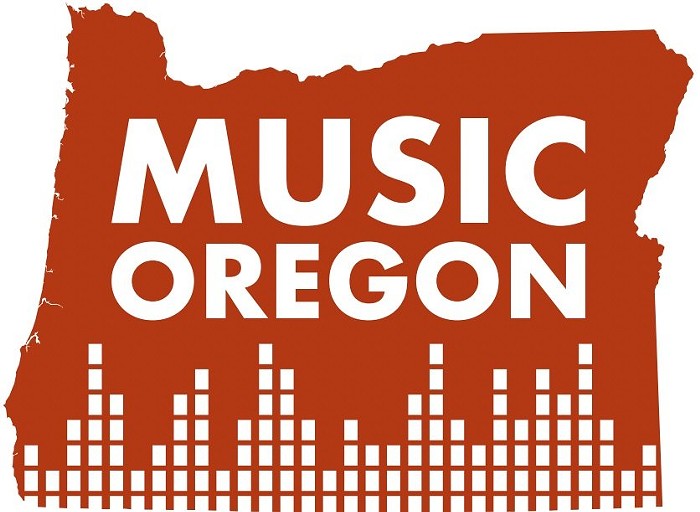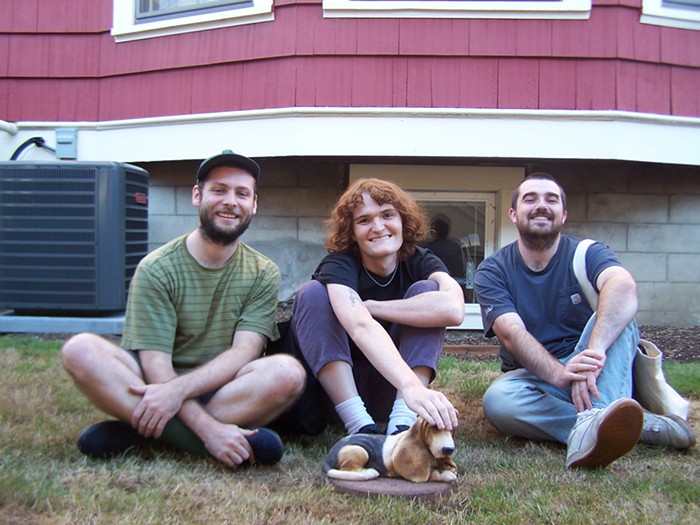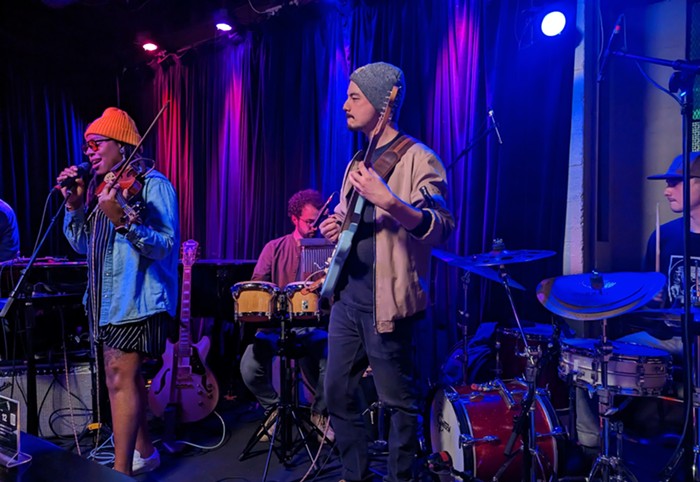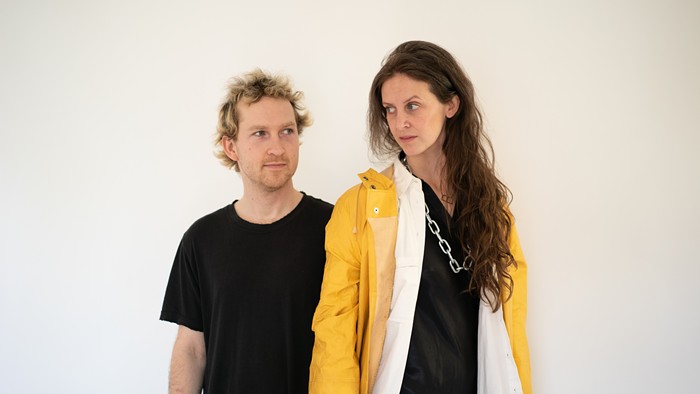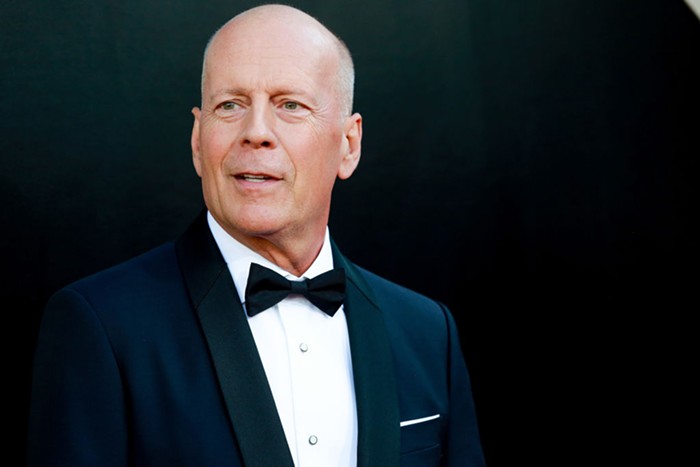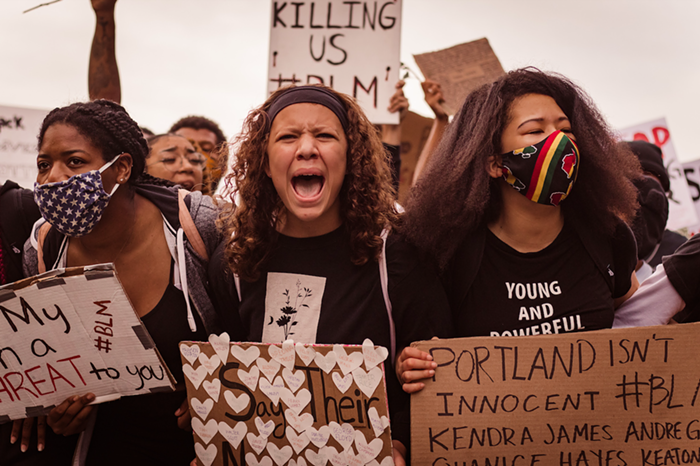
Earlier this week, Pitchfork published its list of The 50 Best Indie Rock Albums of the Pacific Northwest, the latest in their excellent series of well-argued, highly-debatable inventories. (I was honored to be asked to write the introductory essay to the list, though I didn't participate in the voting.)
As one or two of you have pointed out, one or two albums seem to have escaped the attention of the listmakers. My colleague Dave Segal and I noticed the same thing, so we decided to make our own list of 50 records that belong on any list of the best music to come out of this region. We used roughly the same criteria that went into the Pitchfork list, which excluded all "grunge" releases (we let a couple squeak through), included records made in the region by out-of-towners, and were limited to two albums per artist. (I also excluded my bands, though if you're dying to hear me make the case for all three Harvey Danger LPs, and the Long Winters, too, hit me up on Snapchat, k?) -SN

Unwound, Repetition (Kill Rock Stars, 1996)
You’re welcome to dispute it, but this is indisputably Unwound’s greatest album, bringing together the noise, rhythm, and underappreciated melody that made the band so important.
Team Dresch, Personal Best (Candy Ass/Chainsaw, 1995)
The indispensable melodic queer punk watershed, released at a time when being a lesbionic rock band was a huge provocation, even in genteel NW indie rock circles. In fact, Their second album, O Captain, My Captain belongs here, too, but Personal Best was an event. (And the cover art was better)
The Minus 5, The Minus 5 (Yep Roc, 2006)
Precious NW rock’n’roll resource Scott McCaughey, aided by an ever-expanding cast of friends and associates (led by Peter Buck, John Ramberg, and Bill Rieflin), stepped out of a maelstrom to create his deepest, most affecting record.
Tiger Trap, Tiger Trap (K, 1993)
Technically, Tiger Trap were from Northern California, but this record was recorded in Seattle (in three 16-hour days, according to a Chickfactor interview) and set the aesthetic standard for NW indie pop forever after.
Quasi, R&B Transmogrification (Up, 1997)
A statement of purpose from a band that wrenches melodic beauty from instrumental chaos, emotional tumult, and hilarious verbal fatalism. There was nothing like Quasi before Quasi.
Engine Kid, Angel Wings (Revelation Records, 1995)
Brutal, punishing, heavy, scary music from an unjustly overlooked band that loomed very loud in mid-‘90s Seattle, featuring Greg Anderson, who would later play in Sunn O))).
Fastbacks, Answer The Phone, Dummy (Sub Pop, 1994)
Nature’s perfect band. It’s hard to pick when all the records are fantastic, but this one captures them at the “this magic moment” moment.
Hazel, Toreador of Love (Sub Pop, 1993)
The greatest almost-success story of the post-boom NW, this band was a four-headed embodiment of the contrasting, charismatic elements that made up Portland’s magical allure before people figured out how to bottle it.
Pond, The Practice of Joy Before Death (Sub Pop, 1995)
This overlooked art-rock gem was probably precisely the sophomore album this Portland trio should not have made, but it has aged brilliantly, despite seemingly having been largely forgotten. It’s such a drag that these guys have to go down in history as the other Pond.
Jeremy Enigk, Return of the Frog Queen (Sub Pop, 1995)
No one saw the strange majesty of this album coming from the singer of Sunny Day Real Estate, but his solo debut—with brilliant orchestral arrangements by Mark Nichols—changed the terms of the discussion in NW indie music forever.
Zumpano, Goin’ Through Changes (Sub Pop, 1995)
Despite having the worst cover art of all time, the second Zumpano record is a melancholy masterpiece that cemented Carl Newman’s entrenchment in the mid-‘60s piano pop cocktail lounge of the mind from which he would launch the New Pornographers dynasty a few years later.
Silkworm, Developer (Matador, 1997)
Dour, funny, casual, intense, refined, raw, and above all assured, this was the album on which Silkworm (a band way too good to stay unappreciated in Seattle) locked into its definitive sound, which left them free to stretch out as writers.
Sicko, You Can Feel the Love in This Room (eMpTy, 1994)
Many people seem to think that Chef Boy R U Dumb or perhaps even Laugh While You Can, Monkey Boy best captures the greatness of Seattle’s finest pop-punk band. Not so.
Flop, Flop and the Fall of the Mopsqueezer (Frontier, 1992)
People outside the NW continue to believe that ‘90s Seattle was a bongwatery swamp of Sabbath sludge. They aren’t completely wrong. But the real heart of the city, the fast, nervous, melodic, chaotic, funny power pop sound exemplified by Flop, who were the best among a huge crowd of contenders.
Mavis Piggott, You Can Be Low (Flydaddy, 1996)
Almost no one appears to know this moody, mysterious, moderately mathy album by the trio of Meghan Adkins, Nicky Thomas, and John Wickhart. Some of that might be down to label shade, and some to the normal vicissitudes of showbiz. Regardless, the obscurity verges on tragic. This is legitimately one of the most punishingly beautiful rock albums ever made in Seattle. May some Light in the Attic-style label of the future (or indeed the present) discover, rescue, and reissue it to the audience it has richly deserved for 20 years.
Sunset Valley, Icepond (Barsuk, 2001)
Ditto. Except for the moody thing. Sunset Valley were one of the great almosts of turn of the century NW rock, but there’s nothing almost about this ingeniously catchy, brilliantly crafty, pop music master class.
Young Fresh Fellows, The Men Who Loved Music (Frontier, 1987)
The ideal representation of the prevailing mode of NW rock’n’roll: the beer-splattered, laughter-infused house party.
Rat Cat Hogan, Don’t Call Me Twaddy/Eet Ees Too Kolt to Go Swimmink (Elsinor, 1997—cassette only)
“It’s the singer, not the song that makes it worth $8. It’s the singer, not the song that makes everyone push to the front so they can see. It’s the singer, not the song. Ask anyone, they’ll agree. But it’s not the drummer, it’s the beat. It’s not the drummer, it’s the beat. It’s not what he’s wearing for shoes, it’s what he’s doing with his goddamn feet.”
Death Cab for Cutie, Something About Airplanes (Barsuk/Elsinor, 1998)
Still the best one, sorry.
The Dandy Warhols, The Dandy Warhols (Tim/Kerr, 1995)
A blast of camp more in keeping with the spirit of mid-‘90s London than with mid-‘90s Portland, but they had the tunes, the looks, and the hedonistic joie de vivre to make room for a whole other party. There’s a case to be made for Come Down, but the debut (which was not called Dandys Rule, OK? , okay?) captures them when their aesthetic was a little more thrift store, and a little less stylist’s rack.
764-HERO, Weekends of Sound (Up, 2000)
Having settled into their three-piece configuration, the band named for the HOV lane violator hotline achieved glory on this tense, subdued beauty.
Carissa’s Wierd, Songs About Leaving (Sad Robot, 2002)
Some of the most fragile and harrowing music ever made by a group with so many members, most of whom (Jen Ghetto/Champion, Mat Brooke, Sera Cahoone, and Ben Bridwell) would go on to significant careers.
Girl Trouble, Thrillsphere (Pop Llama, 1990)
Tacoma’s greatest export and the natural heirs to the NW’s grandest garage punk tradition. Fun fact: "Neko Loves Rock 'n' Roll" is a salute to fellow (former) Tacoman Neko Case.
Lois, Strumpet (K, 1993)
Amid the maelstrom of noisy bands dotting the landscape, Olympia legend Lois Maffeo made a series of clever, yearning acoustic guitar-based records that made a much bigger sound by being quiet. Her subsequent albums got increasingly accomplished, but this one is pure magic.
Gossip, Movement (Kill Rock Stars, 2003)
In a queer punk milieu largely devoid of a discernible blues influence, along came this trio of Arkansas expats to show Olympia, and then the world, what the howling south could sound like when you can’t wait to escape it.
Treepeople, Guilt, Regret, Embarrassment (Toxic Shock, 1991)
Three little words that form the emotional blueprint for most of the important NW rock songwriters that would follow. Treepeople was Doug Martsch’s band before Built To Spill, and this was their masterpiece.

Hovercraft, Akithisia (Mute/Blast First, 1996)
The pinnacle of alien, alienating space rock in America; Hovercraft were the only Northwest band who made peak-era Pink Floyd sound earthbound.
Jessamine, Jessamine (Kranky, 1994)
A tantalizing fusion of Silver Apples-like electronic tomfoolery and sweetly tuneful kosmische rock, topped by Dawn Smithson and Rex Ritter’s opiated vocals.
Earth, Earth 2 (Sub Pop, 1993)
Ambient doom metal’s Big Bang. Its reverberations still resonate in Sunn O))) and their disciples’ work.
Earth, The Bees Made Honey in the Lion's Skull (Southern Lord, 2008)
The zenith of Earth’s latest phase: stark, menacing desert rock that would give Cormac McCarthy the heebie-jeebies.
Beat Happening, Beat Happening (K, 1985)
It was love at first hear with this collection of lo-fi, cutie-pie rock with hooks that don’t quit—and it’s still the quintessence of Calvin Johnson and company’s art.
Sir Richard Bishop, Polytheistic Fragments (Drag City, 2007)
One of many crucial displays of guitar eclecticism and virtuosity (and a singular piano/tamboura meditation) by the former Sun City Girls legend.
Sun City Girls, Torch of the Mystics (Majora/Abduction, 1990)
The boldest distillation of Sun City Girls’ rampant world-music assimilations into unique new/old rock formations.
Kinski, Be Gentle with the Warm Turtle (Pacifico, 2001)
Imagine if Sonic Youth had formed in Düsseldorf circa 1971. Yeah, Kinski came out of the gate blazing.
Diminished Men, Vision in Crime (Abduction, 2016)
A sanguinary confluence of surf rock, spy jazz, gamelan, and Morricone-esque giallo atmospheres. Diminished Men are unassuming virtuosi who creep in their own mysterious lane.
A Frames, A Frames (S-S, 2002)
Noisy yet melodic, mechanically rigid yet danceable, A Frames' music exudes a scalding, scathing power and an acerbic lyrical slant that has been pretty much unparalleled in our rock scene since the early ’00s.
The Intelligence, Terror and Boredom (Dragnet/Narnack, 2004)
The Intelligence’s debut hooks you right out of the gate with concise, catchy, caustic garage-rock songs that radiate the trenchant, suave dourness of the Fall and Swell Maps.
Children’s Hospital, Alone Together (Sacred Bones, 2008)
An overlooked project by A Frames’ Erin Sullivan and Laura Cassidy, this is low-key one of the most stunning and eerie experimental-rock efforts ever out of Seattle.
Midday Veil, This Wilderness (Beyond Beyond Is Beyond, 2015)
Space rockers adding electronic elements to their arsenal are a quarter a dozen, but Midday Veil’s sojourn into more danceable rhythms doesn’t hinder their ability to get really far out, while still dispensing existential lyrical wisdom.
Master Musicians of Bukkake, Far West (Important, 2013)
Synthetic, organic, majestic, apocalyptic—it’s rock for the end of the world as we know it, and MMOB deal fine.
Factums, Gilding the Lilies (Assophon, 2010)
A sprawling double LP of bedroom-studio wizardry and underground-rock adventurousness that pokes in the same exhilaratingly grim sonic nooks as A Frames and the Intelligence.
Dreamsalon, Soft Stab, (Dragnet/Sweet Rot, 2014)
Cantankerous yet tuneful garage rock at the end of its tether——a rarity in Seattle’s morass of milquetoastiness.
Lavender Flu, Heavy Air (Meds/Holy Mountain, 2016)
A cracked back-porch beauty and a nonchalantly disorienting logic suffuse this Portland supergroup’s expansive, diverse debut double LP that falls somewhere between Olivia Tremor Control’s Dusk at Cubist Castle and Royal Trux’s Twin Infinitives.
Pell Mell, Flow (SST, 1991)
A very special compendium of instrumental rock—featuring later Stranger Genius Steve Fisk on keyboards—to which I used to listen often while driving from Detroit to Cleveland (and vice versa) in the ’90s, and boy did it fire my synapses and keep me focused.
Screaming Trees, Even If and Especially When (SST, 1987)
Before they blew up with “Nearly Lost You,” Screaming Trees made some phenomenal, catchy psychedelic rock, of which this is their apex.
Davis Redford Triad, Ewige Blumenkraft (Holy Mountain, 1998)
Psych rock of remorseless power and strung-out desolation, devoid of all corny signifiers—one of the greatest bad-trip records you’ll ever hear.
Eluvium, Lambent Material (Temporary Residence, 2003)
Former Seattle/current Portland guitarist/keyboardist Matthew Cooper started his journey into rigorous, beautiful drone-based music with this towering opus of Stars of the Lid-like grandeur.
Valet, Nature (Kranky, 2015)
Nudge’s Honey Owens struck out on her own with Valet in the mid ’00s, and after a long hiatus, she delivered this utterly beatific shoegaze masterpiece.
Six Organs of Admittance, Luminous Night (Drag City, 2009)
Temporary Seattleite and Six Organs mastermind Ben Chasny convened several local all-star musicians (Randall Dunn, Eyvind Kang, Dave Abramson, etc.) to cut this gem of nocturnal folkadelic splendor.
godheadSilo, Skyward in Triumph (Sub Pop, 1996)
Brutal low-end theorists Mike Kunka and Dan Haugh miraculously achieve spectacular lift-off and ultra-heavy catharsis.
